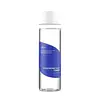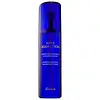What's inside
What's inside
 Key Ingredients
Key Ingredients

 Benefits
Benefits

 Concerns
Concerns

No concerns
 Ingredients Side-by-side
Ingredients Side-by-side

Water
Skin ConditioningPropanediol
SolventPentylene Glycol
Skin Conditioning1,2-Hexanediol
Skin ConditioningSodium Hyaluronate
HumectantTrehalose
HumectantCaprylyl Glycol
EmollientPanthenol
Skin ConditioningSodium PCA
HumectantButylene Glycol
HumectantBetula Alba Juice
AstringentPortulaca Oleracea Extract
Skin ConditioningGlycerin
HumectantHyaluronic Acid
HumectantAlthaea Officinalis Root Extract
Skin ConditioningAloe Barbadensis Leaf Extract
EmollientBeta-Glucan
Skin ConditioningHydrolyzed Sodium Hyaluronate
Skin ConditioningHydrolyzed Hyaluronic Acid
HumectantSodium Hyaluronate Crosspolymer
HumectantWater, Propanediol, Pentylene Glycol, 1,2-Hexanediol, Sodium Hyaluronate, Trehalose, Caprylyl Glycol, Panthenol, Sodium PCA, Butylene Glycol, Betula Alba Juice, Portulaca Oleracea Extract, Glycerin, Hyaluronic Acid, Althaea Officinalis Root Extract, Aloe Barbadensis Leaf Extract, Beta-Glucan, Hydrolyzed Sodium Hyaluronate, Hydrolyzed Hyaluronic Acid, Sodium Hyaluronate Crosspolymer
Water
Skin ConditioningGlycerin
HumectantButylene Glycol
HumectantMethyl Gluceth-20
HumectantPentylene Glycol
Skin ConditioningPhenoxyethanol
PreservativeMaltitol
HumectantPPG-26-Buteth-26
Skin ConditioningPEG-7 Glyceryl Cocoate
EmulsifyingPEG-40 Hydrogenated Castor Oil
EmulsifyingParfum
MaskingAcrylates/C10-30 Alkyl Acrylate Crosspolymer
Emulsion StabilisingSodium Hyaluronate
HumectantSodium Hydroxide
BufferingMenthoxypropanediol
MaskingCitronellol
PerfumingMalva Sylvestris Extract
AstringentNymphaea Odorata Root Extract
RefreshingGeraniol
PerfumingHexyl Cinnamal
PerfumingViola Tricolor Extract
EmollientSodium Carrageenan
Emulsion StabilisingBenzyl Salicylate
PerfumingLinalool
PerfumingMaris Sal
Skin ConditioningBHT
AntioxidantEthylhexylglycerin
Skin ConditioningCI 14700
Cosmetic ColorantCI 42090
Cosmetic ColorantTocopherol
AntioxidantWater, Glycerin, Butylene Glycol, Methyl Gluceth-20, Pentylene Glycol, Phenoxyethanol, Maltitol, PPG-26-Buteth-26, PEG-7 Glyceryl Cocoate, PEG-40 Hydrogenated Castor Oil, Parfum, Acrylates/C10-30 Alkyl Acrylate Crosspolymer, Sodium Hyaluronate, Sodium Hydroxide, Menthoxypropanediol, Citronellol, Malva Sylvestris Extract, Nymphaea Odorata Root Extract, Geraniol, Hexyl Cinnamal, Viola Tricolor Extract, Sodium Carrageenan, Benzyl Salicylate, Linalool, Maris Sal, BHT, Ethylhexylglycerin, CI 14700, CI 42090, Tocopherol
 Reviews
Reviews

Ingredients Explained
These ingredients are found in both products.
Ingredients higher up in an ingredient list are typically present in a larger amount.
Butylene Glycol (or BG) is used within cosmetic products for a few different reasons:
Overall, Butylene Glycol is a safe and well-rounded ingredient that works well with other ingredients.
Though this ingredient works well with most skin types, some people with sensitive skin may experience a reaction such as allergic rashes, closed comedones, or itchiness.
Learn more about Butylene GlycolGlycerin is already naturally found in your skin. It helps moisturize and protect your skin.
A study from 2016 found glycerin to be more effective as a humectant than AHAs and hyaluronic acid.
As a humectant, it helps the skin stay hydrated by pulling moisture to your skin. The low molecular weight of glycerin allows it to pull moisture into the deeper layers of your skin.
Hydrated skin improves your skin barrier; Your skin barrier helps protect against irritants and bacteria.
Glycerin has also been found to have antimicrobial and antiviral properties. Due to these properties, glycerin is often used in wound and burn treatments.
In cosmetics, glycerin is usually derived from plants such as soybean or palm. However, it can also be sourced from animals, such as tallow or animal fat.
This ingredient is organic, colorless, odorless, and non-toxic.
Glycerin is the name for this ingredient in American English. British English uses Glycerol/Glycerine.
Learn more about GlycerinPentylene glycol is typically used within a product to thicken it. It also adds a smooth, soft, and moisturizing feel to the product. It is naturally found in plants such as sugar beets.
The hydrophilic trait of Pentylene Glycol makes it a humectant. As a humectant, Pentylene Glycol helps draw moisture from the air to your skin. This can help keep your skin hydrated.
This property also makes Pentylene Glycol a great texture enhancer. It can also help thicken or stabilize a product.
Pentylene Glycol also acts as a mild preservative and helps to keep a product microbe-free.
Some people may experience mild eye and skin irritation from Pentylene Glycol. We always recommend speaking with a professional about using this ingredient in your routine.
Pentylene Glycol has a low molecular weight and is part of the 1,2-glycol family.
Learn more about Pentylene GlycolSodium Hyaluronate is hyaluronic acid's salt form. It is commonly derived from the sodium salt of hyaluronic acid.
Like hyaluronic acid, it is great at holding water and acts as a humectant. This makes it a great skin hydrating ingredient.
Sodium Hyaluronate is naturally occurring in our bodies and is mostly found in eye fluid and joints.
These are some other common types of Hyaluronic Acid:
Learn more about Sodium HyaluronateWater. It's the most common cosmetic ingredient of all. You'll usually see it at the top of ingredient lists, meaning that it makes up the largest part of the product.
So why is it so popular? Water most often acts as a solvent - this means that it helps dissolve other ingredients into the formulation.
You'll also recognize water as that liquid we all need to stay alive. If you see this, drink a glass of water. Stay hydrated!
Learn more about Water